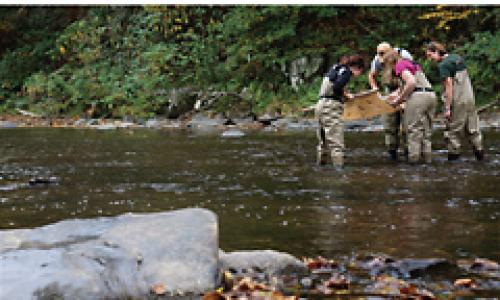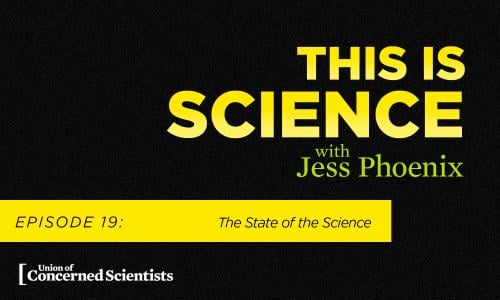Dr. Tyrone Hayes’s work on the dangers of atrazine made him a target for agribusiness giant Syngenta.
Dr. Tyrone Hayes remembers thinking the gig would be harmless. Approached in 1997 by the corporate predecessor of agribusiness giant Syngenta, Hayes—at the time a young U.C. Berkeley assistant professor—agreed to study the effects of the company’s herbicide atrazine on amphibians. Hayes was a rising expert on the endocrine systems of frogs, and he assumed he would not have been hired if the company thought there was anything to find. “My hypothesis was, nothing’s going to happen,” he later told Mother Jones.
But Hayes did find something—namely, that atrazine seemed to be impeding the sexual development of frogs. Now, decades into Hayes’ studies on atrazine, his discoveries have most famously linked atrazine exposure with changing genetically male frogs into functional females, leading to a bitter dispute with Syngenta. Internal documents made public in litigation reveal Syngenta’s plans to harass Hayes in an effort to both discredit his science and tarnish his reputation as a researcher.
Atrazine has been banned in the European Union over concerns that it is a groundwater contaminant with potential effects for wildlife and human health. Yet it is the second-most widely used herbicide in the United States, with a whopping 73.7 million pounds applied in 2013. As such, the stakes in the US are high, both financially for Syngenta and environmentally for the nation. Atrazine often washes into water supplies, particularly in the Midwest, and in 2012 Syngenta reached a $105 million settlement with community water systems over the presence of atrazine in drinking water.
Atrazine’s exact effects on human and environmental health are still unclear, although the EPA currently notes that atrazine is “being studied as a potential endocrine disruptor and carcinogen to both human and aquatic life.” A 2011 independent panel convened by the EPA found “suggestive evidence” to link atrazine to certain types of cancers, and other studies have linked atrazine to birth defects. In June 2016, the EPA released the preliminary ecological risk assessment for atrazine, which found that “EPA levels of concerns for chronic risk are exceeded by as much as 22, 198, and 62 times for birds, mammals, and fish, respectively.”
Back in 2000, Hayes was distraught that Syngenta’s predecessor, Novartis Agribusiness, was not taking his findings seriously. He ended his relationship with the company in 2000 and repeated his experiments with funds from Berkeley and the National Science Foundation, replicating the same disturbing results. From there, Hayes’ relationship with Syngenta—the company was formed in 2000 by a merger between Novartis and AstraZeneca—quickly deteriorated.
In 2001, at a meeting to discuss Hayes’ research, Syngenta brought in a statistical consultant who concluded his results were not statistically significant. David Wake, a professor in Hayes’ department, later told the New Yorker “the issues the statistical consultant was raising were routine and ridiculous. A couple of glitches were presented as if they were the end of the world. I’ve been a scientist in academic settings for forty years, and I’ve never experienced anything like that. They were after Tyrone.”
While Syngenta and Hayes fought an increasingly public battle over the following years, the company’s new plans to discredit Hayes were formed in 2004 and 2005, according to documents unsealed following the 2012 legal settlement. Notes by Sherry Ford, Syngenta’s communications manager, detail Syngenta’s plans to undermine Hayes, including “publication of 3rd party critique of his science,” “systematic rebuttals of all TH appearances,” “making emails public,” “contact Berkeley,” and even “investigate wife.” Meanwhile, an email from a communications consultant recommended getting hold of Hayes’ calendar of speaking engagements so Syngenta could provide audiences with “irrefutable evidence of his polluted message.” A later proposal floated the idea of purchasing Hayes’ name as a search word on the internet, presumably to tarnish his reputation.
While the company claimed that many of their ideas were never implemented, it is clear that several were. Hayes had long claimed that Syngenta representatives were following him to talks, having noticed one or two suspiciously sharply-dressed men asking pointed questions. A former student of Hayes commented that “everywhere Tyrone went there was this guy asking questions that made a mockery of him. We called him the Axe Man.” A Syngenta spokeswoman later confirmed that “A Syngenta representative does try to attend events where Dr. Hayes is speaking. It’s in our best interest, and farmers’, that we have the opportunity to counter his outrageous accusations.”
Syngenta also followed through on several other harassment tactics. The company filed an ethics complaint with Berkeley over Hayes’ emails, charging that they were “aggressive, unprofessional, and insulting,” and released more than one hundred pages of messages. While the emails went viral, Berkeley’s chief counsel ruled that no ethics violations had occurred.
The agribusiness industry also appears to have paid for search engine ads for a period of time. According to the 2012 Mother Jones feature on Hayes, “Googling ‘Dr. Tyrone Hayes’ now returns paid results from groups like AgSense, an agribusiness coalition that leads its critique of Hayes by quoting his ‘propriety and professionalism’ outburst.”
As public as the feud between Syngenta and Hayes has been, there is evidence that the company’s actions to undermine the science around atrazine extend beyond efforts to harass him. In 2009, the company filed a subpoena for the emails of the author of a paper that showed women who conceived during peak pesticide application season were more likely to have children with genital birth defects.
Meanwhile, atrazine is still widely used as regulation chugs slowly forward. The EPA’s June 2016 preliminary ecological risk assessment for atrazine cites several articles by Hayes, but he refuses to feel vindicated. “Asking me if I feel vindicated is like asking someone who’s been in jail for 10 years for something he didn’t do whether he feels vindicated when he gets out,” he said.




